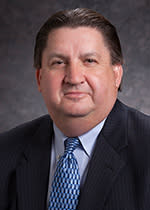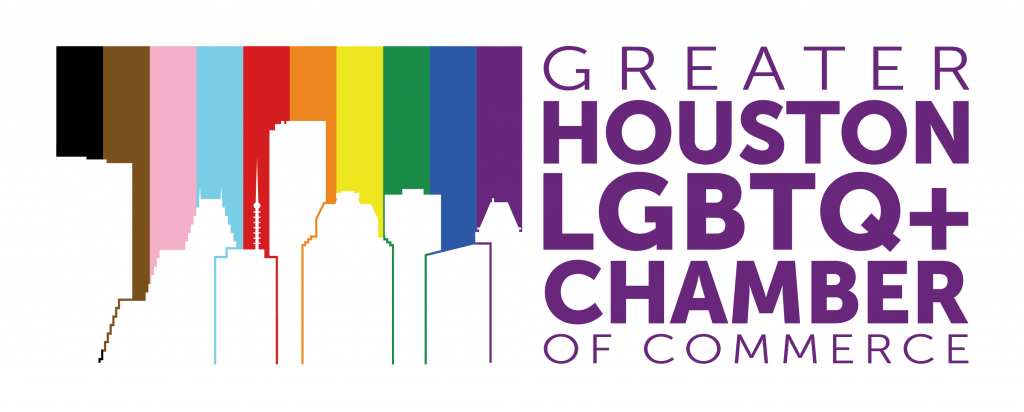
Chamber Chat with Tom Lambert, President and CEO of METRO
The Chamber is committed to telling the stories of our members. Chamber Chat is a regular series profiling our members. We love to engage organizations like METRO, that impact the lives of our members whether personally or through their businesses. METRO is a huge asset in the region and is critical to mobility in HTX! The Chamber is proud to call METRO on our Executive Level members! Can you guess how many riders that METRO served last year? Read more! The number is staggering and shows the critical need for efficient transportation in the region.
In this Chamber Chat, learn more from Tom Lambert, President & CEO with METRO. Tom shares more about the role of METRO in the region, the upcoming METRONext referendum, and what’s in store for METRO in the near future. Do you think Tom prefers BBQ or Mexican? Take your best guess and read further! Tom has a storied career with METRO as well as a strong background in public safety. Read more about Tom’s tenure with METRO and his successful career.
Join the Chamber for our Extended Edition: Brewing Up Business with METRO in the Board Room on October 9. Our special guest speaker will be METRO Board Member Sanjay Ramabhadran. Register Today! Thank you to METRO for sponsoring the October Brewing Up Business.
Tell us more about your role at METRO.
I see myself as an orchestra conductor. It’s a job with many roles including leader, facilitator, mentor, guide, and performance monitor. We have a really talented group of people at METRO who are very committed to this community and improving mobility. My job is to make sure all of the agency’s moving parts work in harmony to ensure we accomplish our core mission of providing safe, clean, reliable, accessible and friendly public transportation services to our region.
As the President & CEO, why are you passionate about the important role of METRO in our region?
Public transportation plays an important role in any community and it doesn’t stop with buses and trains. Complete streets, better sidewalks, better access, improved cycling lanes and walking paths are all part of the mobility service. It’s going to take everything we can do to manage the growth in this region as we nearly double in population over the next two decades. It’s not going to be one mode, it’s going to be a real multimodal approach. METRO is going to be a key part of that. It’s about managing congestion, improving travel times, bettering air quality and so much more. In order to maintain our quality of life, I believe it should be the focus for everyone.
Can you share more about the overall reach and impact of METRO?
Without METRO, more than a quarter of a million people in our area would have no access to transportation. Nearly one-third of all weekday trips to downtown during rush hour are on METRO. About 28 percent of weekday trips to the Texas Medical Center are on METRO. Nearly 39 percent of METRORail riders are taking it to and from work. The impact public transportation has on our region is significant because it means fewer cars on the road and less congestion.
Here’s another interesting fact for anyone who’s ever tried to find a parking space downtown. Without METRO services, downtown would need an additional 65,000 parking spaces. METRO is also looking at different approaches to transit like our community connectors in Acres Homes and Missouri City which provide on-demand curb to destination service. The METRO Board has implemented a policy which allows municipalities outside our service area to enter into agreements with METRO. We just officially launched the Conroe Park & Ride thanks to our partners in the city of Conroe and HGAC.
How many riders does METRO serve on an annual basis?
Last year METRO provided more than 116 million rides across our system. That includes bus, rail, HOV/HOT lanes, Park & Ride commuter service, Star Vanpool and METROLift paratransit service.
METRO completely changed the route structure to make it more efficient for riders. This change must have been a huge undertaking considering how many routes that METRO offers. How was this accomplished?
It began with a lot of analysis of where people live and work. We held numerous community meetings, met with elected officials and other stakeholders. We really wanted to make sure we had a good sense of how to improve the network with more reliable service.
Prior to New Bus Network, we had primarily a five-day a week service. We now have expanded to seven days a week with more frequent routes. We also wanted better connections between different modes for a more workable transit system. The redesign fully integrates the bus and rail networks into a seamless system to better serve riders. Based on population trends and changing patterns of development, we knew we needed to reimagine the system and we did.
We recently saw that the METRO Board of Directors voted unanimously to approve the METRONext Moving Forward Plan. Can you share more about what this means and how METRONext will address our huge transportation challenges in the region?
Board approval of the METRONext Moving Forward Plan means voters will decide on a $3.5 billion bond referendum for the Nov. 5 election. The best source to get the facts and learn more about the Moving Forward Plan is to visit the website, metronext.org. But the goals of the plan are to serve more people in more places while delivering faster, more reliable and frequent service.
The plan does not call for an increase in taxes. The plan calls for approximately 75 miles of METRORapid (Bus Rapid Transit), 110 miles of new or improved HOV (Regional Express) service, 16 additional miles of light rail, 21 new or improved park & rides and transit centers plus BOOST and Signature bus service.
What are you most excited about in terms of what’s ahead for METRO?
I’m excited to see how innovation and new technologies will be utilized to improve public transportation. Over the summer we launched a pilot autonomous vehicle program on the campus of Texas Southern University. We did this in partnership with TSU, the city of Houston, Texas Innovation Alliance, HGAC, Port Houston, Harris County and TxDOT. We hope to use the data from the project to eventually get insight into other potential uses like first and last mile connections and community circulators.
We have also partnered with the city of Houston and Microsoft for a WI-FI pilot project on select bus and rail routes. We plan to embrace integrating technology and transit to improve mobility as a service. Our Office of Innovation at METRO is dedicated full-time to scouting the latest and greatest developments in transportation.
METRO is really multifaceted beyond buses when you consider METRORail, METROLift, METRO STAR Van Pool, etc. Can you share more about how METRO is working to serve the various needs of its riders while addressing transportation challenges in the region?
One way we are addressing the needs of the growing region is through our community connector service which we now have in Acres Homes and Missouri City, but plan to expand. The service uses a smaller vehicle in a zoned area which allows residents within that zone to call and schedule a curb to curb trip or connect to the broader transit system. This kind of on-demand service offers a personalized user experience and works well where larger buses can’t travel.
What do you think is the most common misperception about METRO?
Some think the system is complicated to use. But we have a variety of rider tools to help patrons plan their trip, pay their fare and get real-time alerts in the event there is a change in service. We encourage our riders to not only check out those tools on ridemetro.org, but follow us on our social media platforms and sign up for service alerts.
We are proud to call METRO one of our Chamber members. Why is it important that METRO is part of the Greater Houston LGBT Chamber of Commerce?
At METRO we are committed to delivering timely and efficient transit service throughout the region. We accomplish that by staying in constant communication with stakeholders and the community at large. Organizations like the Greater Houston LGBT Chamber of Commerce provide a wonderful opportunity for us to hear from key stakeholders and use that information to make important decisions about mobility.
BBQ or Mexican and where?
You can’t go wrong with either in this region. But my favorite is Tia Maria’s Restaurant and Cantina. I also love Pappa’s BBQ.
What's your favorite thing to do in HTX when you're not working?
When I’m not working, I love to spend time with my grandchildren.
Learn more about METRO





